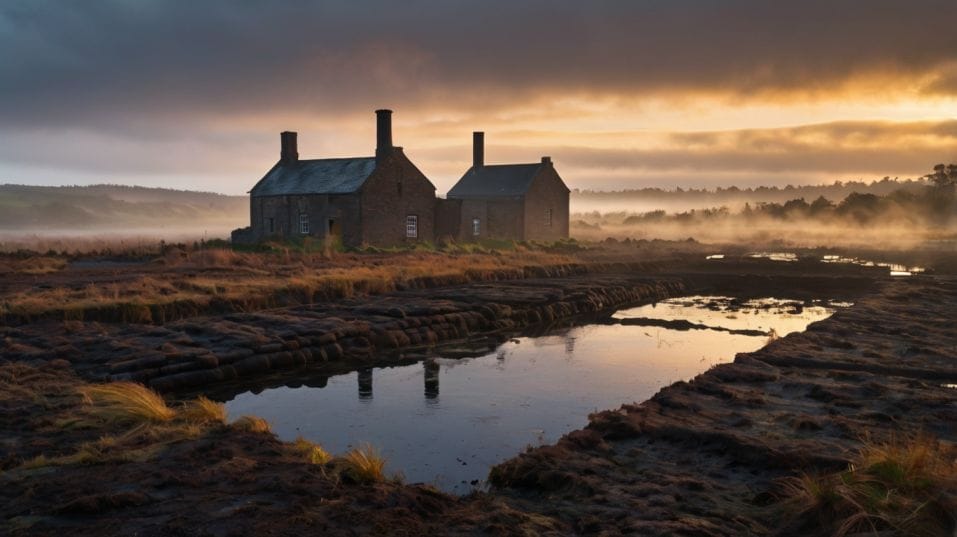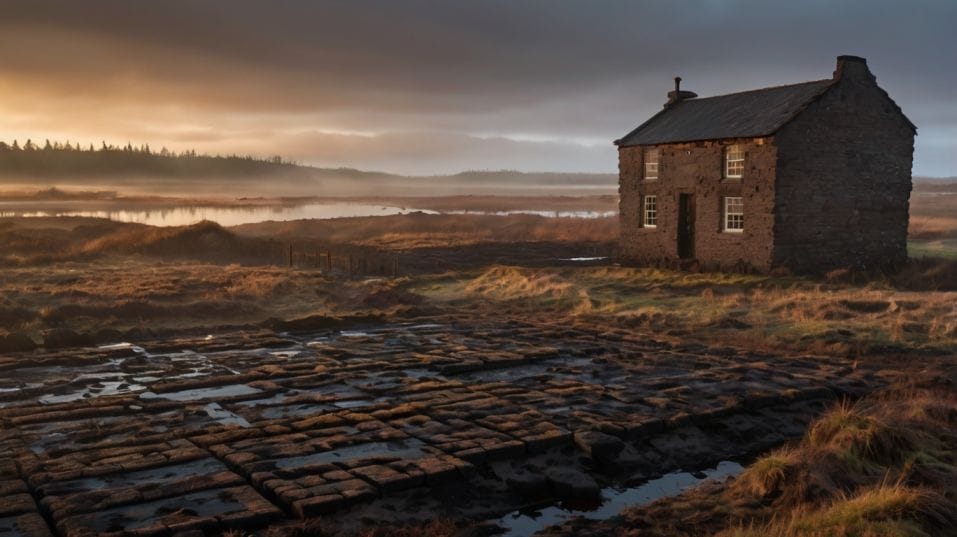How to Identify Peat in Whiskey (Even If You're New)
Discover how to identify peat in whiskey—even as a beginner. Sharpen your palate, grow your collection, and decode smoky flavors with ease.

Can you really taste peat if you're new to whiskey? Absolutely. You don’t need special gear or rare bottles—just curiosity and a glass.
Peat isn’t subtle. It cuts through with a signature that’s hard to miss once you know what to look for.
Learn to spot it, and you’ll start tasting with more confidence, collecting with sharper focus, and trusting your palate instead of hype. Here's how to decode that smoky signal—step by step.
What Peat Really Is—And Why It Changes Everything
Before you can taste peat, you have to understand what it is. Not in theory—in practice.
Peat is ancient, compressed vegetation dug out of the ground in soggy, wind-whipped places like Islay, Orkney, or the west of Ireland.
For generations, distillers have burned it like coal to dry barley before fermentation. That peat smoke is where the magic happens.
It creeps into the grain and leaves behind a chemical signature that reshapes the entire profile of the final spirit.
But here’s the thing: peat doesn’t taste like firewood or barbecue. It tastes like earth that’s been set on fire. Think iodine, sea brine, bog moss, scorched heather, hospital gauze.
All of those weird, specific notes that peated whiskey lovers throw around? They’re grounded in the actual compounds released when peat burns—phenols, guaiacols, cresols.
Once you learn to connect those flavors to their source, peat stops being mysterious. It becomes legible. And when something becomes legible, you can start using it.

Train Your Nose First—This Is Where the Real Work Happens
Forget fancy tasting wheels for now. Your nose is your most powerful whiskey tool—and peat is one of the best ways to train it. Because peat doesn’t hide. It’s not subtle vanilla or soft orchard fruit. It grabs your attention.
How to Start Training
Open a bottle with a known peat influence. Something from Islay is a sure bet, but even lightly peated expressions from the Highlands or Japan can work. Pour a small amount. Let it sit a minute.
Then smell. Slowly. With your mouth slightly open. This opens the olfactory passageways and gives you a clearer hit.
Now try to isolate what you’re smelling, not just if it’s smoky, but how. Does it remind you of a burned-out fireplace? A charred log? A smoked fish shop by the coast? Or is it more like wet moss, antiseptic, or diesel exhaust?
Write it down. Seriously. That act of description locks it into your brain. And that smell? That’s your mental benchmark for peat.
Every time you smell a new whiskey, you’ll start scanning for it, even if it’s buried under layers of fruit, spice, or oak.
Use Contrast to Sharpen Perception
Pro tip: keep two glasses in front of you—one peated, one unpeated. The contrast sharpens your senses instantly.
Sip with Focus—Peat Lives in the Layers
On the palate, peat can either hit like a freight train or drift in like smoke through a half-open window. That’s what makes it so addictive—and so challenging to pin down.
Tasting the Structure of Peat
Take a sip. Don’t rush it. Let the whiskey roll across your tongue, then pay close attention to the mid-palate and finish. Peat rarely shouts sweet. Instead, it brings tension. Earthiness.
Dryness. Sometimes bitterness. It might register as bacon fat, sea spray, wood ash, rubber tubing, or dark medicinal herbs. These aren’t exaggerations—they’re real flavor cues.
And here’s where a lot of beginners get thrown: peat doesn’t just “taste smoky.” It reshapes how a whiskey feels. It can dry out the sweetness.
Amplify the salinity. Add weight to the body. You’re not just detecting a flavor—you’re experiencing a structural shift in the whiskey.
Follow the Finish
The finish is where peat often lingers longest. Even in a well-aged, sherry-finished bottle where the front is full of dates and caramel, that curl of dry smoke might return at the end. Trace it. That’s how you confirm what your nose suspected.
Understand the Variables—Because Not All Peat Is Equal
Peat isn’t one-size-fits-all. Geography, technique, and time all influence how peat presents in your glass.
Geographic Differences in Peat
First, location. Islay peat is maritime—salty, medicinal, briny. Highland peat is more inland—woodsy, sometimes even floral or earthy without the seaweed sting. Peat from Ireland often gives off grassy, herbal, even vegetal notes.
If you're drinking something from Japan or Scandinavia, expect peat to come across lighter, cleaner, sometimes more balanced with fruit or tea-like elements.
How It’s Applied
Then there’s how it’s used. Some distilleries peat the barley themselves; others buy it peated to a specific phenol level (measured in PPM—parts per million).
More PPM usually means more intense smoke, but aging and barrel influence can round off even the punchiest expressions. Don’t chase numbers. Trust your senses.
What Time in the Barrel Does
Time in the barrel also matters. Young peated whiskey can be wild and aggressive—burnt tires, bonfire smoke, raw vegetal funk.
Older peated expressions mellow out. The phenols bind with oak tannins and esters, leading to more subtle, integrated smoke—sometimes leathery, sometimes incense-like. It’s not about stronger or weaker. It’s about how it shows up.
Peat as a Collector’s Compass
If you’re starting to collect seriously, learning to read peat is a superpower.
How Peat Helps You Choose Bottles
It tells you something essential about the distillery’s style, the production philosophy, and even the aging approach. A bottle with balanced peat might signal a thoughtful blend.
A punchy peat bomb might point to a younger cask strength experiment. A whisper of peat in a rich sherry-aged malt might suggest masterful restraint.
Track your reactions. Build a flavor map. Over time, you’ll learn which distilleries use peat as a spotlight and which use it as a supporting actor. That helps you avoid redundant bottles—and seek out the ones that truly expand your range.
Ask Better Questions
Want to buy smarter? Start asking better questions:
- Is the peat driving the profile, or rounding it out?
- What type of cask is it resting in, and for how long?
- Is the smoke bright and briny—or dark, earthy, and dry?
Now you’re not just tasting—you’re decoding. That’s where confidence comes from.
Final Thoughts: Learn to Read the Smoke
Peat isn’t a flavor trend. It’s a fundamental tool in whiskey-making—and a sensory skill you can build. Once you recognize how it behaves, you don’t just taste better.
You collect with clarity. You avoid overpriced noise. You find bottles that actually match your palate.
So here’s your next move: pour two drams. One peated, one not. Smell, sip, and write down what you notice. Don’t overthink it.
Just notice. Then do it again next week. Try a new region. Compare different ages. Ask questions. Revisit bottles you thought you figured out.
The more you train your senses, the more you trust your gut. And that’s when whiskey stops being intimidating and starts being something you own. Get your nose in the glass. Start now. There’s smoke on the horizon.




